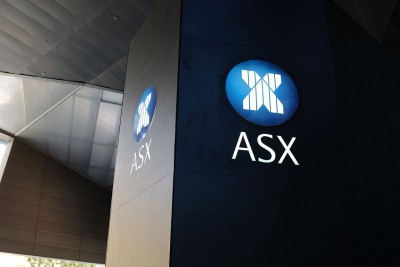Weekly market review
Written and accurate as at: Oct 09, 2017 Current Stats & Facts

The Australian market jumped last week, helped primarily by strength in the miners. Retail-related names declined over the week as the Australian Bureau of Statistics (ABS) announced that consumer spending had fallen -0.6% sequentially from July, which had itself seen a -0.2% fall. This shocked a market expecting a +0.3% gain and is the largest two-month slide since 2010. Mall-focused REITs such as Scentre (SCG) (-1.0%), Westfield (WFD) (-2.4%) and Vicinity Centres (VCX) (-1.1%) all took a hit, as did retail chains Harvey Norman (HVN) (-0.5%), JB Hi-Fi (JBH) (-1.4%) and Myer (MYR) (-3.2%). Australia’s retail sector is under fire on multiple fronts: Consumer behaviour is changing, with a greater focus on ’experiences’ such as dining and holidays – while stagnant wage growth and higher electricity prices are crimping disposable income. Meanwhile, global fast-fashion chains such as Zara, H&M and Uniqlo are ratcheting up the competition – and the threat of Amazon Prime continues to lurk on the horizon. This combination presents a material threat – one that has been reflected in the sector’s significant de-rating over the last 12 months.
The ABS data also dampened any expectations of near-term rate hikes from the Reserve Bank. However, defensive rate-sensitive stocks did not generally outperform, given a raft of positive data from the US last week bolstered the case for further Fed rate hikes and higher US bond yields. Transurban (TCL) (-0.4%) and Sydney Airport (SYD) (-0.8%) weakened slightly. The S&P/ASX 200 A-REIT sector, caught between the softer Australian retail data and prospect of lower US bond yields, gave up -1.0%. Construction company Lendlease (LLC) (+2.2%) was one of the few stocks within the broader property space to buck the trend as the infrastructure spending theme continued to garner headlines.
The prospect of higher US rates helped lift insurers, with Suncorp (SUN) up +1.5%, Insurance Australia Group (IAG) +0.8% and QBE (QBE) +3.2%. The latter dipped earlier in the week after management downgraded earnings guidance for 2017 following the need to raise its provisions for natural disasters given the spate of hurricanes and earthquakes in the Americas as well as Queensland’s Cyclone Debbie earlier this year. There is a reasonable degree of negativity reflected in QBE’s valuation rating at these levels, however the key risk is that the existing plans for capital management – roughly A$1bn over the next 2-3 years – may be scrapped by the new CEO at the February 2018 earnings result following a series of significant hits to earnings.
Miners also had a strong week, helped along by a quarterly report from the Department of Industry, Innovation and Science which suggested that strong iron ore and coking coal prices can continue to see earnings growth for the remainder of FY18, before waning in FY19. BHP (BHP) (+3.2%), Rio Tinto (RIO) (+4.1%) and Fortescue Metals (FMG) (+0.6%) all made gains, as did Whitehaven Coal (WHC) (+4.6%). Caution may be required given Chinese authorities continue to tighten property markets at the margin, although President Xi’s seeming personal alignment with the ’One-Belt, One-Road’ initiative suggests infrastructure spending may help support demand. On the supply side, ongoing commitment to the Structural Supply Side Reform (SSSR) programme is important in constraining capacity and supporting prices. A close eye on this month’s National People’s Congress will be necessary for any indications that this stance may change.
Elsewhere, Qantas (QAN) enjoyed a 5.2% gain following an upgrade from Goldman Sachs, which recognised the company’s earnings growth potential beyond the recent re-rating, on the back of a benign environment for fuel prices and waning headwinds from the reduction in mining-related demand.










